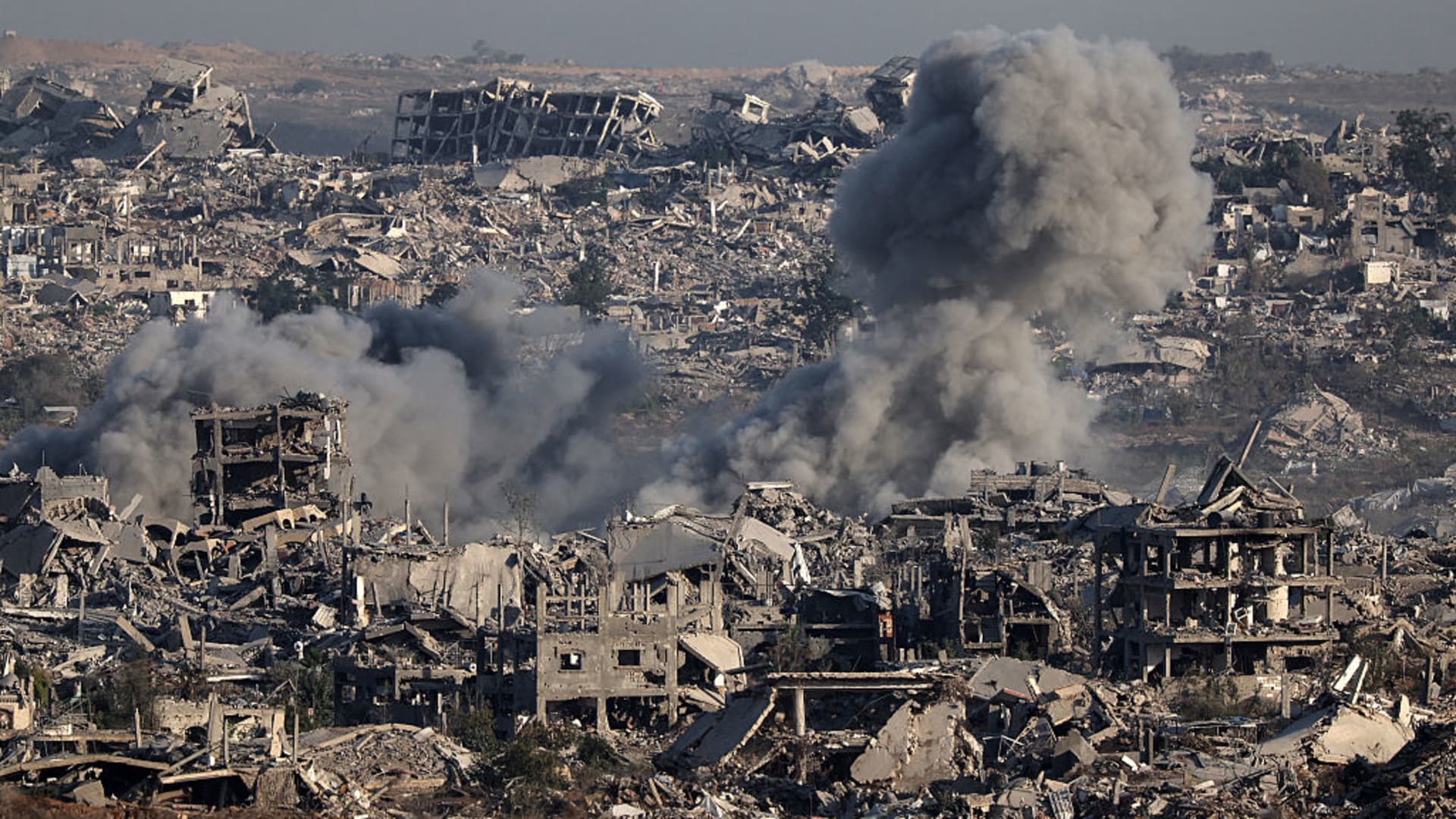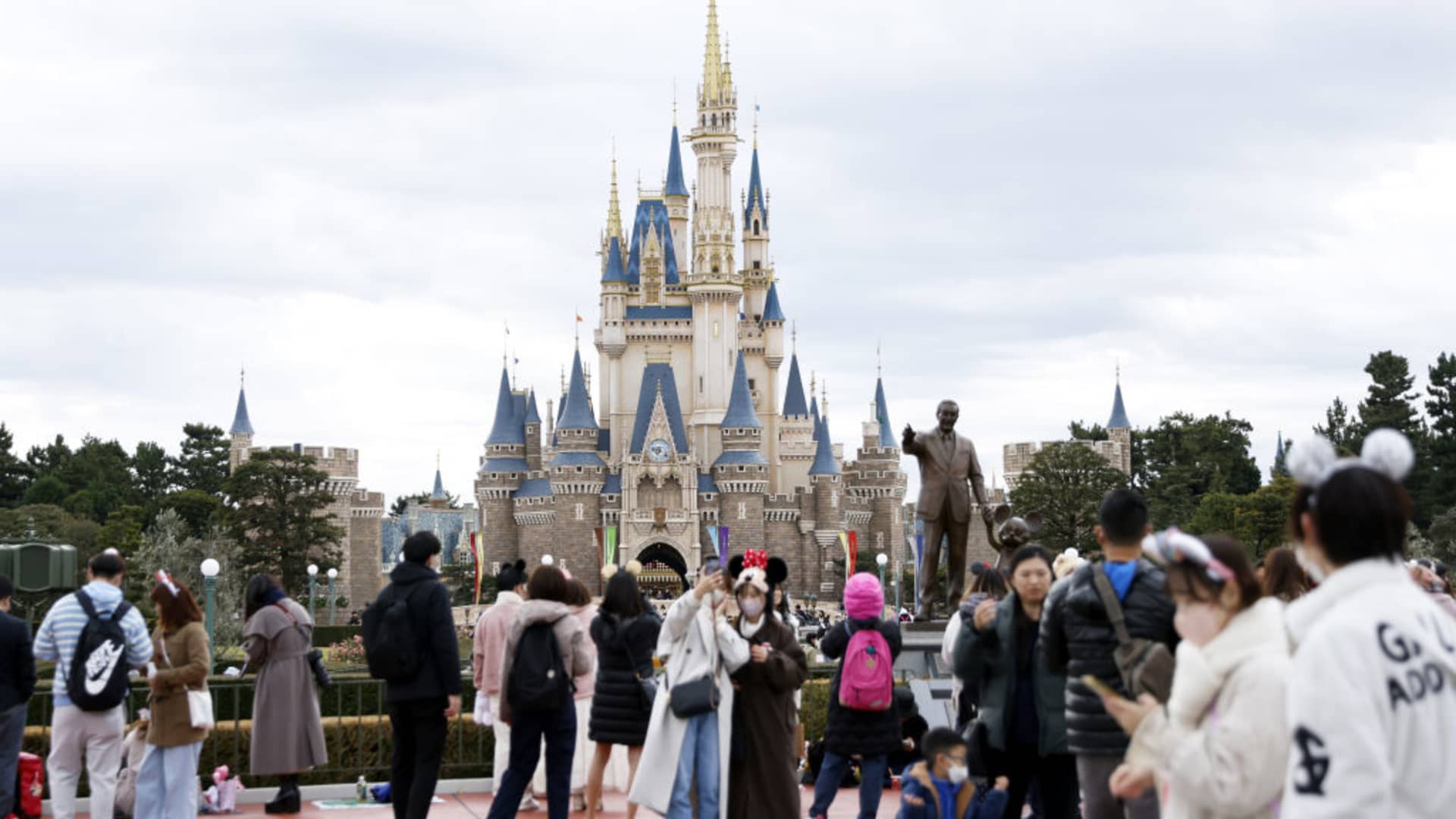This picture taken from Israel’s border with the Gaza Strip shows smoke billowing over destroyed buildings during an Israeli strike on the besieged Palestinian territory on July 17, 2025.
Jack Guez | AFP | Getty Images
A document detailing plans for post-war Gaza aims to make President Donald Trump’s “Gaza Riviera” vision a reality — using mass displacement, artificial intelligence, and at least a decade of U.S. trusteeship over the war-ravaged enclave.
The plan, outlined in a 38-page document initially disclosed by the Washington Post, is reportedly under consideration by Trump’s administration. It involves “voluntary” relocation of Gaza’s population in exchange for digital tokens, six to eight “AI-powered smart cities,” and a manufacturing hub named after Elon Musk.
It also calls for the entirety of Gaza’s population of two million to be relocated, at least temporarily, through either what it calls voluntary departures to another country, or the moving of residents into temporary housing areas within the Strip during reconstruction.
The plan was developed by some of the same Israelis behind the controversial U.S.- and Israeli-backed Gaza Humanitarian Foundation (GHF), according to the Washington Post, which first reported on the document. The GHF, whose stated goal is to provide food inside the enclave, has received heavy criticism from U.N. experts for allegedly being “exploited for covert military and geopolitical agendas in serious breach of international law.”
The State Department and White House did not immediately respond to CNBC requests for comment.
Gaza would be under U.S. trusteeship for around ten years “until a reformed and deradicalized Palestinian Polity is ready to step in its shoes,” according to the plan, entitled the Gaza Reconstitution, Economic Acceleration and Transformation Trust, or GREAT Trust. It promises to transform the long-blockaded territory, on which more than 60,000 Palestinians have been killed since the start of the Israel-Hamas war on Oct. 7, 2023, into a glittering tourism resort and tech hub.
“Reconstruction will also increase value of Gaza by ~$324B and dramatically improve quality of life,” the document states. The GREAT Trust would begin under an initial U.S.-Israel bilateral agreement, and Israel would maintain “overarching rights to meet its security needs,” according to the document.
The State Department and White House did not immediately respond to CNBC requests for comment.
People gather in the yard of the Ahli Arab hospital, also known as the Baptist hospital, to mourn and bid farewell to the bodies of victims killed in Israeli bombardment in Gaza City, on March 18, 2025.
Majdi Fathi | Nurphoto | Getty Images
The authors of the plan claim that no federal funding or donations would be required; it would instead be financed by private and public sector investment in what it describes as “mega-projects,” from data centers and electric vehicle factories to luxury apartments and seaside resorts.
The development plan also envisions using roughly 30% of Gazan land that is public — leased to the Trust for up to 99 years — and any investments as its initial capital and assets, which it claims constitutes a $300 billion asset value with “self-generating revenue streams.”
Gazans who choose to relocate to another country would be given a $5,000 relocation package, four years of rent subsidies, and one year of food subsidies, according to the document. The plan assumes that 25% of Gazans would choose to leave the country, and of those, 75% would choose not to return.
U.S. President Donald Trump shakes hands with Israeli Prime Minister Benjamin Netanyahu during a meeting in the Oval Office of the White House in Washington, DC, on April 7, 2025.
Saul Loeb | Afp | Getty Images
The plan claimed that this method would save $23,000 on every Palestinian relocating compared to costs of supporting those who stay inside Gaza. At no point does the document address international law, Palestinian opposition to mass relocation, or opposition to this plan by other Arab states, who have long demanded a state and self-determination for Palestinians.
The plan’s “end state” is Gaza’s “self-governance under the Abraham Accords” — a framework that establishes diplomatic relations with Israel — though there is no mention of an officially recognized Palestinian state.
Gaza residents who leave land that they own would also receive a “digital token” by the GREAT Trust in exchange for the right to develop their property, and can “redeem their tokens for ownership of rebuilt residences,” according to the plan.
Trump first announced his vision of a “Gaza Riviera” under U.S. ownership in February, drawing swift condemnation and shock from international leaders, and Middle Eastern allies like Saudi Arabia, Jordan and the United Arab Emirates in particular. Rights groups have accused Israel of carrying out ethnic cleansing and genocide in Gaza, charges that the Israeli government forcefully denies. Meanwhile, Israeli Prime Minister Benjamin Netanyahu has praised Trump’s idea.













